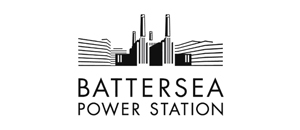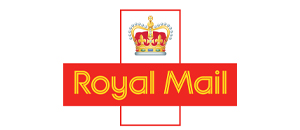Battersea Power Station
Completion date: June 2022
Client: Battersea Power Station Development Corporation and Battersea Project Land Company Limited
Project value: £80m+
Battersea Power Station, one of London’s most iconic landmarks, recently reopened to the public after an eight-year renovation project that transformed this important heritage building into an exciting new mixed-use neighbourhood. After a challenging tender process, blu-3 was appointed to undertake utility works and internal enabling works within Battersea Power Station. Over the course of the development, blu-3 was awarded further civil engineering works packages, culminating in Malaysia Square, the impressive new public open space at the southern entrance of the Grade II* Listed building designed by renowned architects WEA.
The project
The overall multi-billion-pound project at Battersea Power Station has turned a derelict Grade II* Listed building and its 42-acre surroundings into a modern, multi-use complex, comprising a range of homes, shops, restaurants and leisure venues, along with over 7.5 hectares of public space, all served by the new Battersea Power Station underground station, on the Northern Line. The architects’ vision for Malaysia Square was inspired by the famed Mulu Caves in Sarawek, renowned for the largest network of limestone caves on earth, while also celebrating Malaysian culture and heritage.
The brief
blu-3’s civil engineering experts delivered extensive and complex enabling works including site clearance, demolition and diversions of existing services, along with the provision of new surface drainage, services and ducts. The height of the existing ground level needed to be reduced, which led to further works in the disposal of non-hazardous excavated material. Alongside the hard and soft landscaping installed by blu-3, the company provided surface and ground water management, and haul roads, two approach roads and bridge abutment were also constructed.
-3 undertook the civil engineering and hard and soft landscaping works to the final, permanent access road into Battersea Power Station – Pump House Lane – which included re-configuring the existing road layout and installing new utilities. blu-3 also managed the infrastructure improvements at the nearby Queens Circus roundabout, installing traffic-controlled ‘cycle friendly’ lanes, segregated from other traffic; the first of its kind in London.
Across the whole project, blu-3 also provided Building Information Modelling (BIM), the 3D model-based process which creates and manages all information surrounding design assets, ensuring improved collaboration, shared data and project delivery that is on time and on budget.
Challenges and solutions
This complex project created a number of challenges for blu-3’s experts.
- Some of the existing foundations within the power station reached 12 meters deep – in order to access these foundations on such a tight site, sheet pile cofferdams were installed to act as a restraint to hold back soil from the excavations and machines were lowered to undertake the breakout.
- While major concrete breakout within a listed building already poses its own challenges, blu-3’s constant and thorough vibration monitoring ensured no damage was caused to this important structure.
- Part of the drainage works included installing a surface water deep drainage connection to the River Thames, which had to be delivered within just nine weeks. It was a very tight, segregated working area and meticulous planning ensured material deliveries and subcontractor works occurred at the correct stage to prevent overcrowding.
- Vehicle access raised further challenges. The bridge approaches had to be constructed while the temporary residential road passed through the site, and once it was complete, final surfacing had to take place over a weekend to ensure it was ready for Monday morning traffic.
- In order to construct the Western haul road, which was built to facilitate piling operations, communication cables and water mains had to be diverted. The haul road had complications of its own as it was at the rear of the hotel building, alongside the railway line with only one-way in for construction vehicles.
- Extensive site investigation works had to take place at Queens Circus Roundabout to identify all buried services and obstructions, and contaminated soil had to be cleared. Due to traffic management restrictions, the team had to manage the heavy workload within short working hours.
- Multiple stakeholders required continuous engagement and the team had to work collaboratively to overcome issues with design and development.
- Stringent site requirements were also in place to ensure new and prospective residents were unaffected by the work taking place and the project programme was critical with a well-publicised opening date, which was further complicated by the project closing down during the Covid-19 pandemic, resulting in new guidelines on working conditions once everyone returned to site.
- Works to Pump House Lane were undertaken across various phases to minimise disruption and to always ensure one-way traffic flow.






















































